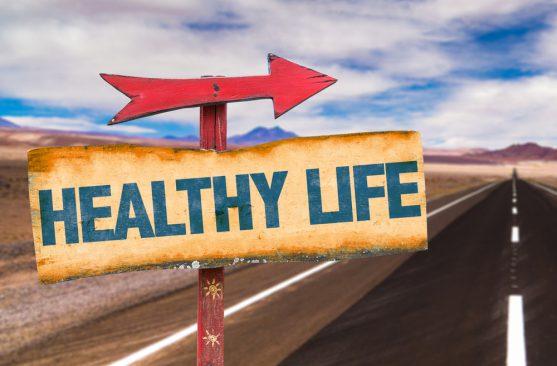Depression is a complex mental health condition that affects millions of people worldwide. It manifests in various forms, each with distinct characteristics, symptoms, and treatment approaches. Understanding the different types of depression is crucial for accurate diagnosis and effective management. This article explores the most common types of depression, their symptoms, and the implications for treatment.
Major Depressive Disorder (MDD)
Major Depressive Disorder, often referred to simply as depression, is characterized by persistent feelings of sadness or a lack of interest in activities once enjoyed. To be diagnosed with MDD, individuals must experience at least five of the following symptoms for a minimum of two weeks:
- Persistent sad or anxious mood
- Feelings of hopelessness or pessimism
- Irritability
- Feelings of guilt, worthlessness, or helplessness
- Loss of interest or pleasure in hobbies and activities
- Fatigue or decreased energy
- Difficulty concentrating, remembering, or making decisions
- Changes in appetite or weight
- Thoughts of death or suicide【1】【3】.
can be a recurrent condition, meaning individuals may experience multiple episodes throughout their lives. Treatment often involves a combination of medication and psychotherapy.
Persistent Depressive Disorder (Dysthymia)
Persistent Depressive Disorder (formerly known as dysthymia) is a chronic form of depression characterized by a low-level depressed mood lasting for at least two years. While the symptoms are less severe than those of major depression, they can still significantly impair daily functioning and quality of life. Symptoms may include:
- Low self-esteem
- Feelings of hopelessness
- Changes in sleep patterns (insomnia or oversleeping)
- Changes in appetite (overeating or undereating)
- Fatigue【1】【2】.
Individuals with persistent depressive disorder may also experience periods of major depressive episodes during their lifetime. Treatment typically includes psychotherapy and may involve antidepressant medications.
Bipolar Disorder
Bipolar Disorder is characterized by extreme mood swings that include emotional highs (mania or hypomania) and lows (depression). During depressive episodes, individuals may exhibit symptoms similar to those seen in major depression. However, bipolar disorder is distinct due to its manic phases, which can include:
- Increased energy levels
- Decreased need for sleep
- Unusual talkativeness
- Racing thoughts【1】【3】.
Treatment for bipolar disorder usually involves mood stabilizers and psychotherapy to help manage both the depressive and manic episodes.
Seasonal Affective Disorder (SAD)
Seasonal Affective Disorder is a type of depression that occurs at certain times of the year, typically during the fall and winter months when daylight hours are shorter. Symptoms may include:
- Low energy levels
- Sleep disturbances (oversleeping)
- Weight gain due to increased appetite
- Difficulty concentrating【2】【4】.
SAD is thought to be related to changes in sunlight exposure affecting circadian rhythms and serotonin levels. Treatment options often include light therapy, psychotherapy, and antidepressant medications.
Postpartum Depression
Postpartum Depression occurs after childbirth and affects approximately one in nine women. It is characterized by feelings of extreme sadness, anxiety, and exhaustion that can interfere with a woman's ability to care for herself and her baby. Symptoms may include:
- Severe mood swings
- Difficulty bonding with the baby
- Withdrawal from family and friends
- Changes in sleep patterns【1】【3】.
Postpartum depression requires prompt treatment to ensure the well-being of both mother and child. Treatment options typically involve counseling and medication.
Psychotic Depression
Psychotic Depression occurs when an individual experiences severe depressive symptoms accompanied by psychotic features such as hallucinations or delusions. These symptoms often have themes related to guilt, worthlessness, or death【1】【4】. Treatment usually involves antidepressants combined with antipsychotic medications and psychotherapy.
Atypical Depression
Atypical Depression is characterized by specific symptoms that differ from typical major depressive disorder. Individuals may experience:
- Increased appetite or weight gain
- Hypersomnia (excessive sleeping)
- Sensitivity to rejection
- A heavy feeling in the limbs【2】【5】.
This type of depression can respond well to certain antidepressants known as monoamine oxidase inhibitors (MAOIs) but may also benefit from psychotherapy.
Premenstrual Dysphoric Disorder (PMDD)
Premenstrual Dysphoric Disorder is a severe form of premenstrual syndrome (PMS) that occurs in women during the luteal phase of their menstrual cycle. Symptoms can include:
- Severe mood swings
- Irritability or anger
- Depression or anxiety
- Physical symptoms like bloating or breast tenderness【3】【4】.
options often involve lifestyle changes, medication (such as SSRIs), or hormonal therapies.
Disruptive Mood Dysregulation Disorder (DMDD)
Disruptive Mood Dysregulation Disorder is diagnosed in children and adolescents who exhibit chronic irritability and severe temper outbursts that are disproportionate to the situation【4】【5】. This condition differs from typical childhood behavior issues and requires specific treatment approaches involving therapy and sometimes medication.
Conclusion
Understanding the different types of depression is essential for accurate diagnosis and effective treatment planning. Each type presents unique challenges and requires tailored interventions to address specific symptoms and underlying causes.
If you or someone you know is experiencing symptoms consistent with any form of depression, seeking professional help is crucial for obtaining an accurate diagnosis and appropriate treatment options. Mental health professionals can provide support through therapy, medication management, or both—helping individuals navigate their journey toward recovery effectively.
Recognizing that depression can manifest in various forms empowers individuals to seek help early on and fosters a greater understanding within communities about this prevalent mental health condition.

